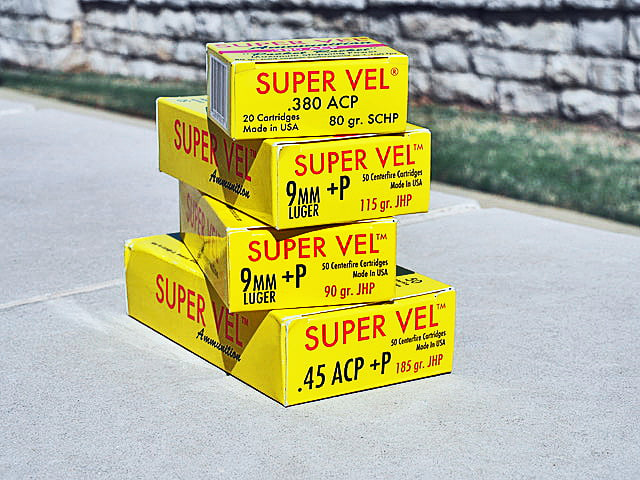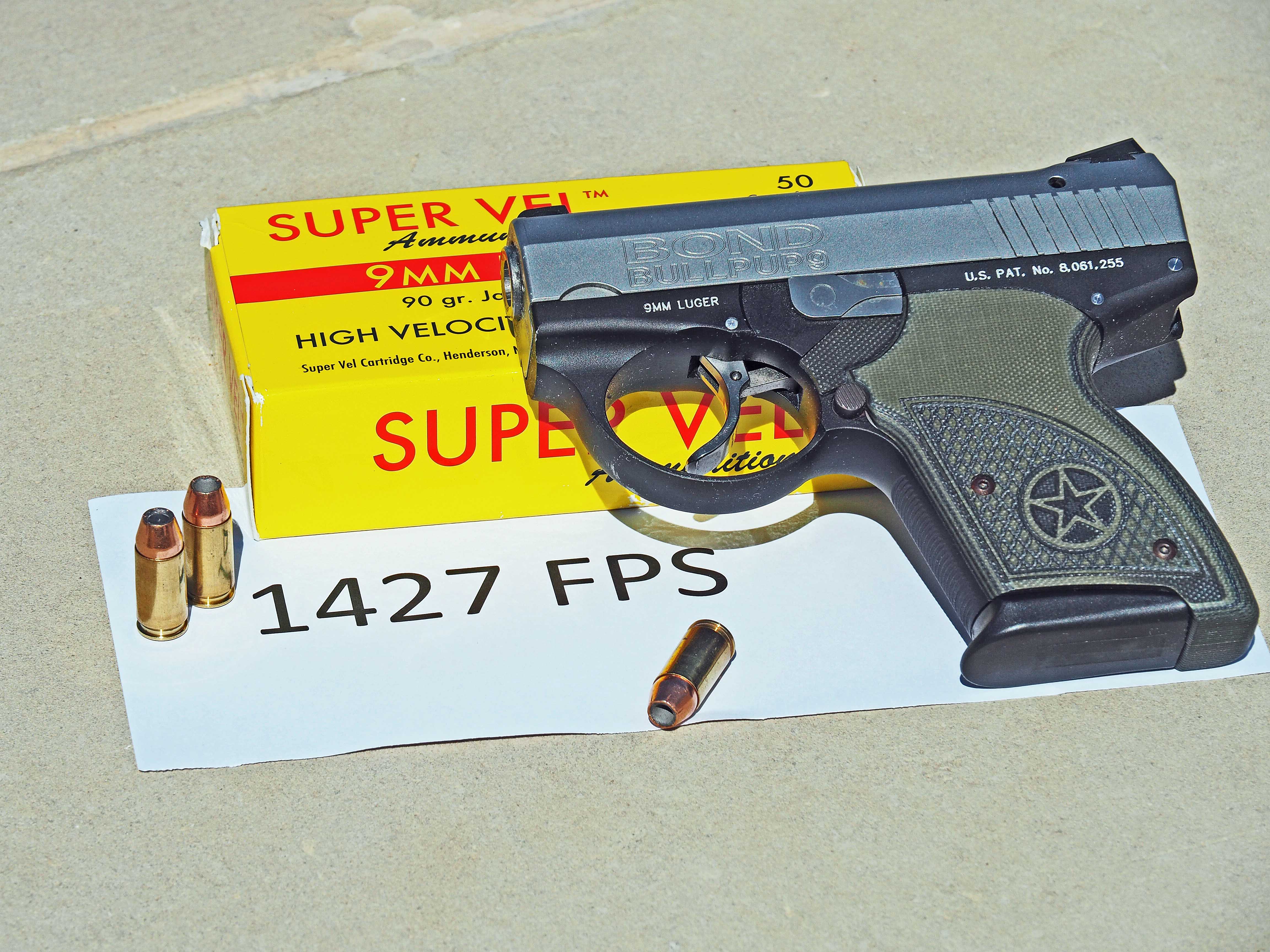Super Vel Ammo Is Back!
Super Vel is back! For those who remember the profound effect the original Super Vel had on police and defensive ammunition in the 1960’s and 70’s, this alone will be enough to start the search for the iconic yellow and red boxes at the local gun store. Super Vel started the modern trend to lighter (and better) hollowpoint bullets at higher velocities, at a time when virtually all police agencies used the .38 Spl. loaded with 158-gr. round-nose lead bullets. When several large police departments, especially the Los Angeles County Sheriff’s Office, adopted Super Vel, the shooting community took notice, and the major ammunition companies of the day scrambled to catch up with Super Vel. Eventually, the majors refused to sell components like brass cartridge cases to Super Vel, leading to the company’s demise in the mid-1970’s.
A Classic, Reborn
The new Super Vel is a new company with no direct ties to the old Super Vel, but it’s very close to the spirit of the original. Just like the original, it aims to produce ammunition with the highest possible velocity and greatest stopping power. Improvements in bullets and propellants over the years mean today’s Super Vel flies faster and hits harder than most of us could have imagined in 1965. However, all of Super Vel’s ammo meets SAMMI specifications for pressure and should be safe in any gun rated for the use of +P rounds.
I visited Super Vel in its virtually unmarked location in a strip center in Henderson, Nevada. The company is rapidly outgrowing its space and will likely move to larger quarters in the near future. They load all of their “yellow box” ammo in new brass cases with specially designed jacketed hollowpoint bullets made by Sierra Bullets to Super Vel’s proprietary specifications. Powders are OEM propellants not available to the public, and selected for maximum performance in short barrels, including flash suppressants.
They currently offer loads in the most popular chamberings — .380 ACP, 38 Spl., 9mm and .45 ACP. Incidentally, Super Vel determines its loads based on penetration, not velocity – and all of their yellow box loads meet or exceed the FBI protocols for penetration. They also offer 9mm and .45 “certified select” brown-box practice loads using FMJ bullets in once-fired military brass as economical range and practice ammo. There is also a .223 load in the “certified select” line.
Most ammunition companies publish velocities based on testing in “pressure barrels” which are often longer than commonly used barrels and are not vented like revolvers are. As a result, many factory loads will not reach their published velocities in “real world” guns. Super Vel’s website, on the other hand, lists actual velocities in a number of widely used handguns, including the shorter barrels found in compact and subcompact guns designed for regular carry.
I tested Super Vel in my guns, at a range in Haltom City, Texas with an Oehler P35 chronograph on a 78-degree day. Here are the results in my guns:
Best of the Best
While all of the Super Vel loads are “special,” several were of particular interest to me. I was anxious to see how Super Vel performed in my current EDC, a Bond Arms Bullpup. If you aren’t familiar with the Bullpup, it is a double-action-only semi-auto using reverse-feed operation to fit a 3.3″ barrel into a pistol with only a 5″ slide, making it the smallest 9mm semi-auto on the market.
The Super Vel 9mm matched the velocity for a similar length barrel on the Super Vel website and was between 100-150 fps faster than the premium defensive ammunition I previously used in them. First, the 90 gr. 9mm round produced a truly impressive 1427 fps in my 3.3″-barreled Bullpup, and, like all of the guns I shot Super Vel in, it fed and functioned flawlessly. The Bullpup’s reverse feed operation extracts rounds backward out of the magazine so it requires a good crimp for reliable performance, and Super Vel was up to the task.
Next, I tried the .45 ACP with 185-gr. JHP in several really short-barrel guns. It maintained well over 1000 fps even in my 3″ Para PDA (1064 fps) and 3½” Para P12 (1084 fps). Finally, I tried the .380 which, unlike the other calibers, uses a solid copper hollow-point 80 gr. bullet. This load also maintained over 1000 fps even in a 2.7″ SIG P238 and 2.7″ Kel-Tec P3AT.
Needless to say, Super Vel is now in all of my defensive handguns. I didn’t get a chance to try the 90-gr. 38 Spl. “Super Snub” listed at over 1300 fps in the 1.875″-barreled S&W J-Frame guns, but I have no doubt it will meet or exceed the advertised velocity like all of the other loads I tested.
It’s not an overstatement to say the introduction of the original Super Vel revolutionized the entire ammunition industry. Now all manufacturers offer loadings with performance which would have been unthinkable in 1965. The new Super Vel takes that performance up another notch, and I am glad to see them back in the arena.
To learn more, visit https://www.supervelammunition.com/.







